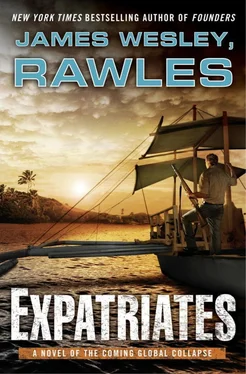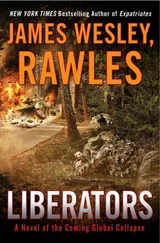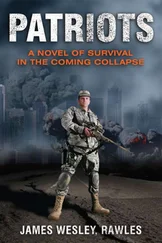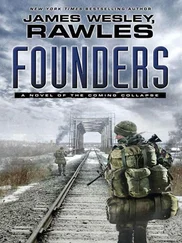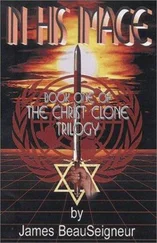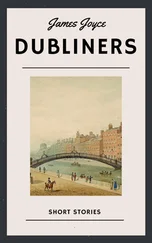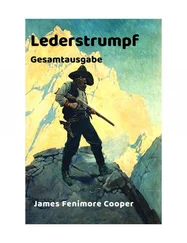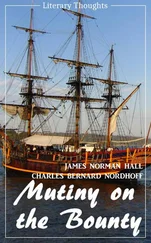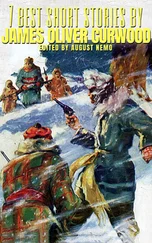He could hear Ava weeping. She said, “Thank you, Lord, for this answer to prayer.”
Casuarina, Northern Australia—December, the Year Before the Crunch
Chuck’s Jeep had nearly 187,000 miles on the odometer. The vehicle’s left-hand steering arrangement was a constant source of amusement. With amazing regularity, someone from the oil company would attempt to jump in as a passenger, on the driver’s side. This would be met with comments like “What, are you chauffeuring today, sir?” Even better was when Burroughs brought his brindled Great Dane with them on their fossicking trips. Chuck would sit behind the wheel in the left front seat, the dog would sit in the right front seat, and Burroughs and Drake would sit in the back. They loved seeing the expressions on the faces of the motorists in approaching cars, because to them it looked as if the dog was driving.
When they had begun working for Nolan, both men were in their early thirties, divorced, and recovering alcoholics. Chuck did his best to keep them away from beer. His main weapon was his ice chest, which he constantly kept full of their favorite soft drinks. For Drake, it was Bundaberg Ginger Beer, and for Burroughs it was Solo brand lemon soda.
For himself, Chuck usually carried ice-cold water in a pair of Coleman wide-mouthed backpacking water bottles that were so well worn and battered that their markings had been completely rubbed off. He found that avoiding sugary sodas was best for maintaining his desired body weight. But on particularly hot days, he liked to have a Schweppes Passiona. He tried to keep a couple of those—or the Kirks brand Pasito equivalent—in the bottom of the ice chest, but he often found they had been filched by his men.
Chuck Nolan’s employer, AOGC, had begun focusing on true rank-wildcat exploration in recent years and had started an aggressive seismic exploration program to find areas for future drilling. (A “rank” wildcat venture was exploration of a long distance from existing wellheads.) Chuck did most of his prospecting work in the Bonaparte Basin and Daly Basin, south of Darwin, or in the McArthur Basin, east of Darwin. Occasionally, he would work as far south as the Birrindudu Basin, but it was a long drive into hot and dry country, and he dreaded every trip there.
Chuck particularly liked the exploration style of AOGC in that they relied upon conventional 2-D seismic data, which required far less manpower and “men on the ground” than the large, manpower-intensive 3-D surveys he previously led back in the United States.
While some of the other seismic prospecting crews transported enormously heavy 58,000-pound peak force seismic vibrators, he preferred to work with his explosives team. Depending on the terrain, this work was less time consuming and required only a small crew and, as Nolan claimed, gave a stronger and higher-resolution image of the underlying formations. He often said: “My idea of the perfect day of fossicking is to get in and get out fast, make things go boom, and leave big dust clouds. I like to start early and get home early.”
Typically, he would go on preliminary surveys by himself or with just one assistant to survey the terrain and to lay out future seismic surveys, recording GPS coordinates along the way. Another crew would methodically drill the shot holes, in patterns of up to thirty-six bores. That same crew would also lay out the thousands of feet of cable and geophone jugs, to receive the reflected energy from each shot.
After the crew had finished, Chuck’s team would return to the completed shot holes, set up their recording instruments, and carefully lower the large Geoprime dBX explosive charges into the holes. The company had started out using gelignite, but in more recent years, partly because of environmental regulations, they had switched to Geoprime dBX, a high explosive that was specially tailored for seismic acquisition. The explosive was made by Dyno Nobel. The Geoprime dBX variant they used was packaged in thirty-four-inch-long bright yellow plastic cases that were five inches in diameter. The cases were threaded at the end, so multiple charge cases could be combined by simply screwing them together, to provide a detonation of the desired force.
Just before the detonation they would “roll tape” while igniting the charges—although in the modern context, this meant high-resolution digital recording rather than the magnetic tape equipment of years ago. Later, this recorded digital data would be painstakingly processed by AOGC’s “boffins” into 2-D seismic sections or data volume of the earth’s underlying structure, which would then be analyzed by the company to assess the economic potential of hydrocarbons in the area. In addition to oil and natural gas, the company also searched for coal and coal bed methane gas. As Nolan frequently told folks, the process was similar to a medical ultrasound, which creates an image of the internal human body. In fact, ultrasound technology was based upon oil field seismic technology.
Chuck was often called in to help with the interpretation of the data. The boffins tended to work hacker hours, wandering into the office as late as two P.M. and staying as late as midnight. To Chuck, who liked to start work at six A.M. and be home by three thirty P.M. on his office days, the disparity in hours was frustrating.
Every major oil company had a specialized seismic group in their exploration departments, and each company carefully guarded their secrets for advanced imaging and interpretation technology. One of AOGC’s reasons for hiring Chuck was to capitalize on his 2-D interpretation skills. Much like a radiologist interpreting an ultrasound or CT-scan image, Chuck had a particularly keen eye for assessing the hydrocarbon potential from a set of seismic images. Seismic interpretation was as much an art as it was a science.
Aside from Chuck, most of AOGC’s oilfield and survey crews came from bogan backgrounds, although given their high salaries, they were often called CUBs—cashed-up bogans. Chuck found their culture rather interesting. Many bogans, he noticed, had Southern Cross tattoos. The tattoo’s familiar pattern of stars from the Australian flag, however, had become synonymous with racism against the aboriginal population and their deep dislike of immigrants, an attitude Chuck openly disagreed with.
Despite their diverse backgrounds and differing opinions, Chuck got along quite well with the men on his crew. There was plenty of joking and some good-natured teasing, as well as discussions about current events, sports, celebrities, and different brands of cars. Whenever they mocked Chuck for being an American and driving a Jeep, he would crack jokes about popular Holden cars, which were either built in Australia or imported from other countries and sold under the Holden name. He was fond of saying “Holden isn’t a family name, but an acronym that stands for Heap of Lead Doing Essentially Nothing.” During a conversation with a drilling crew foreman, Chuck couldn’t help but ask, “Why do Holdens have heated rear windows?” The foreman, always game for Chuck’s jokes, shot him a questioning look. Chuck paused a beat before answering, “So their owners can keep their hands warm when they’re pushing them.”
“It is a commonplace that the history of civilisation is largely the history of weapons…. A complex weapon makes the strong stronger, while a simple weapon—so long as there is no answer to it—gives claws to the weak.”
—George Orwell, “You and the Atomic Bomb”
Casuarina, Northern Territory, Australia—February, the First Year
Chuck began spending most of his weekends with Ava. They had long conversations about a wide range of topics, but mostly about theology and the Christian life. Just as their relationship was blossoming, however, Ava moved away to begin college at the ANU. They carried on via e-mail and phone calls, but Chuck missed her company. To compensate, Chuck did more reading, attended Bible studies, played his guitars, and went hiking. He would have also liked to do some target shooting and hunting, but the bureaucratic challenges of importing any of his guns from Texas were daunting.
Читать дальше
